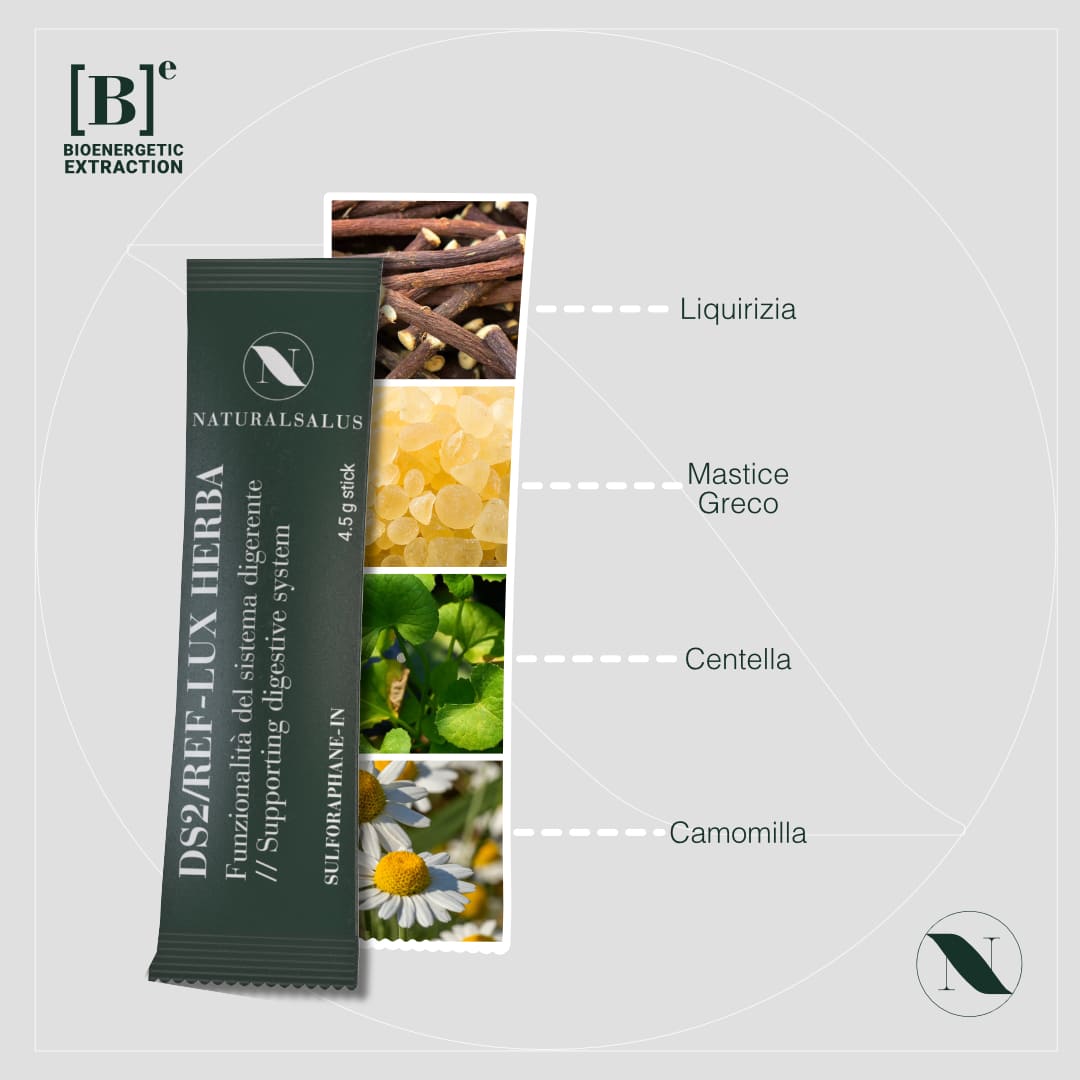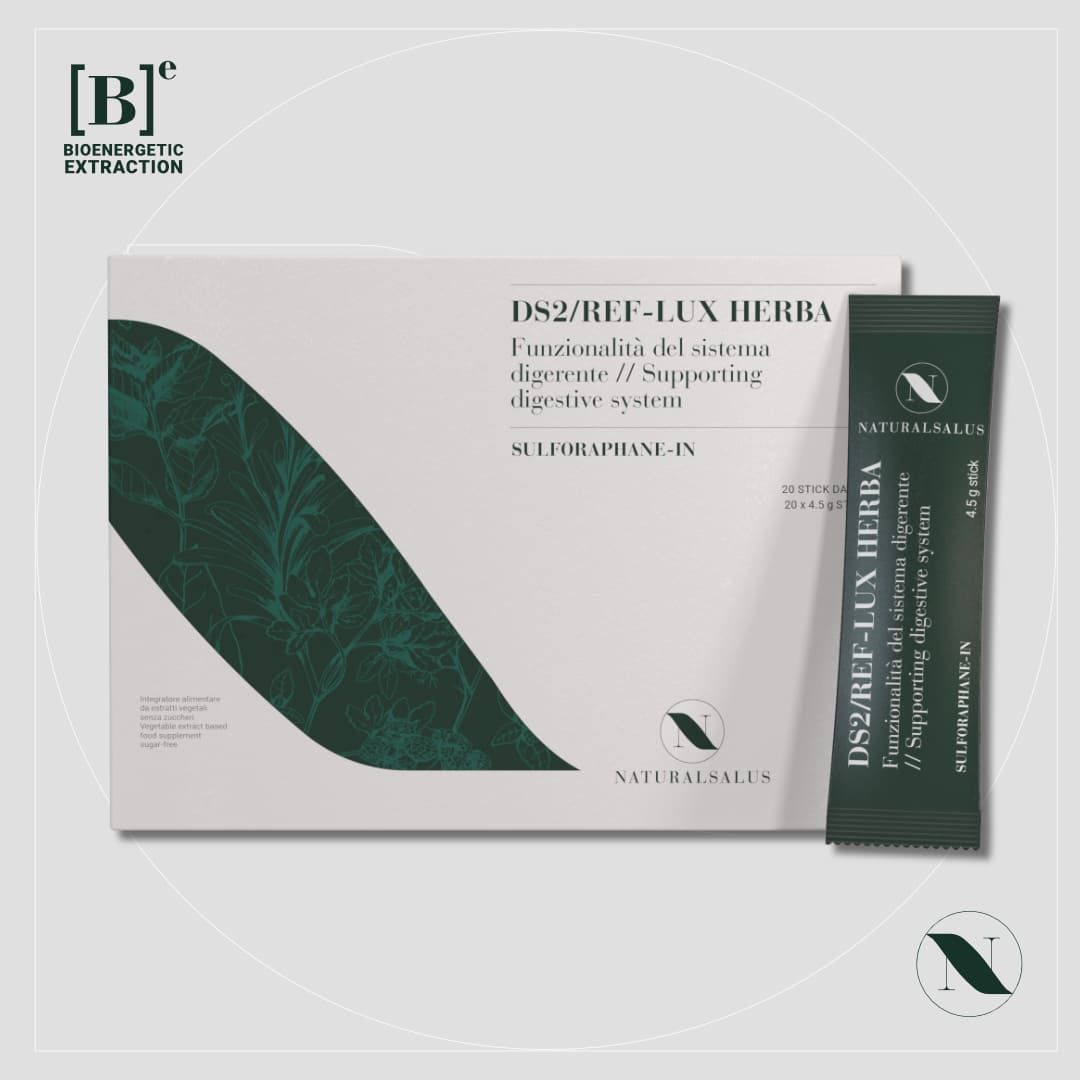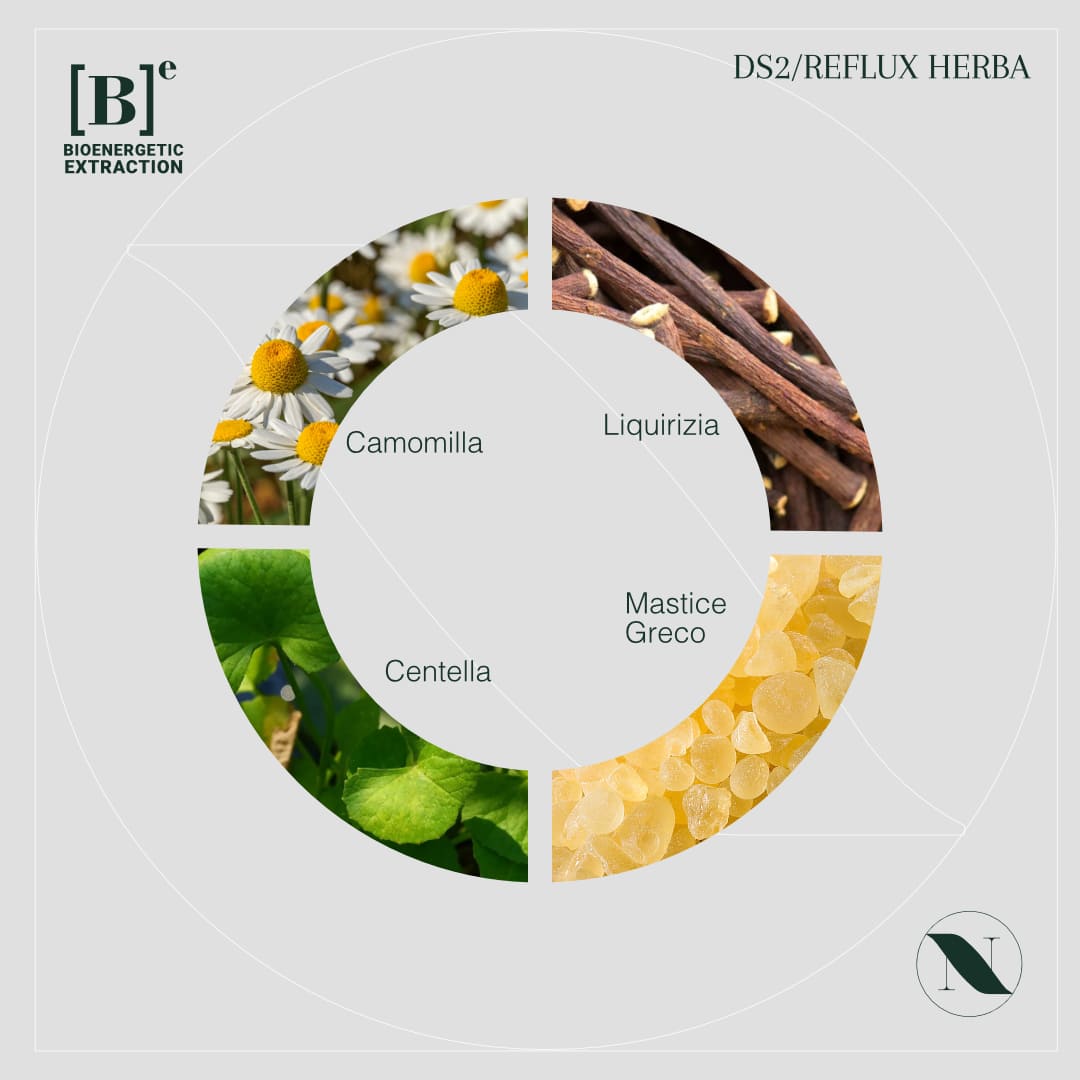Come agisce nel tuo corpo
Liquirizia (625 mg e.s.)
Contiene glicirrizina e carbenoxolone, attivi con funzione antiulcera, cicatrizzante e regolatrice dei succhi gastrici. Riduce la secrezione acida e stimola la produzione di muco gastrico protettivo.
Centella (752 mg e.s., tit. 20% triterpeni)
Stimola la rigenerazione delle mucose, la sintesi di collagene ed elastina. Favorisce la riparazione delle pareti gastriche e riduce l’infiammazione nei casi di gastrite erosiva o reflusso cronico.
Mastice Greco (712 mg)
Gommoresina ricca di terpeni e polifenoli ad azione antibatterica e cicatrizzante, particolarmente attiva contro l’Helicobacter pylori. Riduce l’acidità, calma i sintomi da reflusso e favorisce la rigenerazione della mucosa.
Camomilla (500 mg e.s.)
Ricca in a-bisabololo e apigenina, ha azione calmante, antispasmodica e antinfiammatoria. Rilassa la muscolatura gastrointestinale, migliora la digestione e attenua l’irritazione della mucosa gastrica.
Sulforafano (10% da 4,8 mg di e.s. di Broccolo)
Antiossidante naturale estratto dal broccolo, modula la risposta infiammatoria gastrica, promuove la disintossicazione cellulare e migliora la tolleranza gastrica agli agenti irritanti. Utile anche in presenza di H. pylori.











